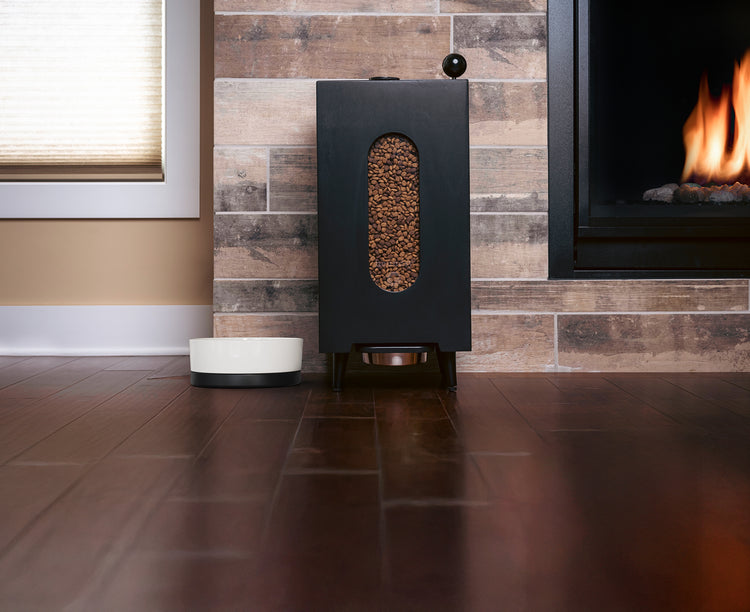Can You Patent a Dog Food Recipe? Understanding the Legal Aspects of Pet Food Innovation
- Houndsy
Table of Contents
- Introduction
- Understanding Patents: The Basics
- Can You Patent a Dog Food Recipe?
- The Role of Trademarks and Copyrights
- The Importance of Innovation in Dog Food
- The Legal Pathway: Steps to Patent a Dog Food Recipe
- Conclusion
- FAQ
Introduction
Have you ever pondered the intricate world of pet food, where creativity meets legality? As pet owners, we often find ourselves concerned about the quality of the food we feed our furry companions. In this era of increasing awareness about pet nutrition, the question arises: can you patent a dog food recipe? This inquiry doesn’t just touch on legalities; it delves into the heart of innovation in the pet food industry.
The pet food market is booming, projected to reach a staggering $132 billion globally by 2025. With such growth comes a surge of new products and recipes designed to cater to our pets' health and taste preferences. But as entrepreneurs and dog lovers brainstorm unique dog food recipes, understanding the patent process becomes essential.
In this blog post, we will explore the nuances of patenting a dog food recipe, the criteria that make a recipe patentable, and the implications of intellectual property in the pet food industry. By the end of our discussion, we hope to equip you with a comprehensive understanding of this topic, encouraging you to reflect on your own pet feeding practices and the potential for culinary innovation.
Understanding Patents: The Basics
Before diving into the specifics of dog food recipes, it's crucial to grasp what a patent is and the different types available.
What is a Patent?
A patent is a legal right granted by the government to an inventor, allowing them exclusive rights to make, use, sell, or distribute their invention for a certain period—typically 20 years. This protection encourages innovation by ensuring that inventors can reap the benefits of their creations without the threat of competition.
Types of Patents
-
Utility Patents: These cover new and useful processes, machines, articles of manufacture, or compositions of matter. Most dog food recipes would fall under this category if they offer a novel method of preparation or a unique ingredient combination.
-
Design Patents: These protect new, original, and ornamental designs for an article of manufacture. If your dog food packaging has a unique design, it might be eligible for a design patent.
-
Plant Patents: These are for new varieties of plants that have been asexually reproduced. This might be relevant if you develop a new breed of dog-friendly produce.
Understanding these patent types is vital for anyone considering entering the pet food industry.
Can You Patent a Dog Food Recipe?
The straightforward answer is yes, but with caveats. While you can apply for a patent on a dog food recipe, obtaining one is not as simple as it may seem.
Criteria for Patentability
To successfully patent a dog food recipe, it must meet three primary criteria:
-
Novelty: The recipe must be new and not previously disclosed to the public. This means that if your dog food recipe is similar to an existing product, it may not qualify for a patent.
-
Non-obviousness: The recipe must not be obvious to someone skilled in the field. This means that if your recipe is a simple variation on existing recipes or ingredients, it may not meet this criterion.
-
Utility: The recipe must serve a useful purpose. In the case of dog food, this typically relates to nutritional benefits for dogs.
Challenges in Patenting Dog Food Recipes
-
Common Ingredients: Many dog food recipes utilize common ingredients, making it challenging to demonstrate novelty. For instance, a recipe containing chicken, rice, and vegetables might not be patentable unless it includes a unique preparation method or ingredient.
-
Prior Art: Before applying for a patent, an inventor must conduct a thorough search to ensure that their recipe doesn’t infringe on existing patents (known as "prior art"). This can be a complex process, as the pet food market is filled with various formulations.
-
Cost: The patent application process can be expensive, often requiring legal assistance. Entrepreneurs must weigh the potential benefits against the costs involved.
The Role of Trademarks and Copyrights
While patents protect the invention itself, it's also essential to consider other forms of intellectual property protection, such as trademarks and copyrights.
Trademarks
If you create a unique name or logo for your dog food recipe, you can protect it with a trademark. This ensures that no one else can use a similar name that could confuse consumers.
Copyrights
While recipes themselves cannot be copyrighted, the written expression of a recipe—such as a cookbook—can be. This means that if you create a book that includes your dog food recipe along with detailed instructions and personal anecdotes, that book can be protected by copyright.
The Importance of Innovation in Dog Food
At Houndsy, we understand that the pet food industry is evolving rapidly. Our commitment to innovative design and quality reflects our mission to enhance the dog-feeding experience. Our flagship product, the Houndsy Kibble Dispenser, exemplifies this ethos by offering a perfect blend of style and functionality. We believe that feeding time should not only be practical but also enjoyable and aesthetically pleasing.
Enhancing Pet Nutrition
As pet parents, we are increasingly aware of the impact that nutrition has on our dogs' health and well-being. In recent years, there has been a growing demand for high-quality, nutritious dog food options. This shift in consumer preferences has led to a surge in innovation within the pet food industry, with companies experimenting with unique ingredients and formulations.
The Future of Pet Food Innovation
The future of pet food lies in innovative recipes that cater to specific dietary needs and preferences. As we explore the possibilities of nutritious dog food recipes, we invite you to consider how Houndsy can enhance your pet's feeding experience. Our Accessories collection complements the Houndsy Kibble Dispenser, creating a seamless feeding environment that is both functional and stylish.
The Legal Pathway: Steps to Patent a Dog Food Recipe
If you're considering patenting your dog food recipe, follow these steps to navigate the legal landscape effectively.
Step 1: Conduct Research
Before you start the patent application process, conduct thorough research to ensure your recipe is unique. Explore existing patents and published recipes to confirm your creation's novelty.
Step 2: Document Your Recipe
Keep detailed records of your recipe, including the process, ingredients, and any testing or results. This documentation is crucial when applying for a patent.
Step 3: Consult with a Patent Attorney
Navigating the patent process can be complex, so consulting with a patent attorney is advisable. They can guide you through the application process, help you conduct a patent search, and ensure your application meets all legal requirements.
Step 4: File Your Patent Application
Once you have completed your research and documentation, file your patent application with the United States Patent and Trademark Office (USPTO). Be prepared for the application process to take several months, as the USPTO reviews and assesses your request.
Step 5: Maintain Your Patent
If granted, remember that patents require maintenance fees and can expire after a certain period. Stay informed about your patent status and any necessary renewals.
Conclusion
In summary, the question of whether you can patent a dog food recipe is multifaceted. While the possibility exists, it requires careful consideration of novelty, non-obviousness, and utility. As pet owners and innovators, we have the potential to shape the future of pet nutrition through creative recipes and products.
As we navigate the world of pet food innovation, we invite you to explore our Houndsy Kibble Dispenser and Accessories collection to elevate your dog's feeding experience. Together, we can create a world where feeding our beloved pets is both delightful and health-conscious.
FAQ
Can I patent a homemade dog food recipe?
Yes, you can apply for a patent on a homemade dog food recipe, but it must meet specific criteria such as novelty, non-obviousness, and utility.
What are the costs associated with patenting a recipe?
The costs can vary significantly depending on legal fees, application fees, and the complexity of the patent. It's advisable to budget for legal assistance to navigate the process efficiently.
Can I trademark my dog food's brand name?
Yes, if you create a unique brand name for your dog food, you can file for trademark protection to ensure no one else can use a similar name.
Can I copyright a dog food recipe?
While the recipe itself cannot be copyrighted, the written expression of the recipe in a cookbook or article can be protected.
What should I do if I think my recipe is unique but I'm unsure?
Conduct thorough research on existing patents and published recipes. Consulting with a patent attorney can also provide clarity on your recipe's patentability.












